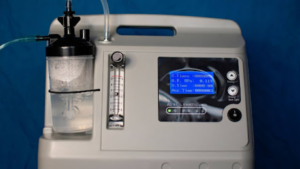
Technology has revolutionized how we interact with our kitchen appliances. Kitchen appliances, like phones and computers, are becoming smart too.
Take the case of smart refrigerators. According to Digital Trends, these kitchen appliances don’t just keep your food and drinks cold. They can stream music and videos, tell you recipes, and even make phone calls. Then there are ones that have screens on the outside, so you can see what’s inside the fridge without having to open it.
Among all these advancements, smart kitchen faucets are a fusion of convenience, efficiency, and style. These fixtures have evolved beyond their traditional counterparts, offering an array of features that make daily kitchen tasks more manageable and enjoyable.
From built-in filtration systems to water-saving capabilities, here are a few must-have features in modern-day smart kitchen faucets.
#1 Built-in Filtration Systems
For households concerned about water quality, smart kitchen faucets with built-in filtration systems offer peace of mind and convenience. These faucets have advanced filtration technology that removes impurities, contaminants, and odors from tap water, delivering clean water directly from the faucet.
Access to filtered water at the touch of a button eliminates the need for bulky countertop filtration systems. It also reduces reliance on single-use plastic bottles, promoting health and sustainability in the kitchen.
#2 Chemical Detection System
According to the US EPA, the drinking water of around 26 million Americans is contaminated with chemicals. Under such circumstances, modern smart faucets need chemical detection systems. Otherwise, the country could be at risk of a situation similar to the Camp Lejeune water contamination incident.
As per TorHoerman Law, from 1953 to 1987, the water supply at Camp Lejeune was tainted with hazardous chemicals. Subsequently, it was revealed that numerous residents of Camp Lejeune during that period developed different types of cancers.
Further scientific studies revealed that those cancer cases were directly caused by water supply contamination. The Camp Lejeune victims later filed the Camp Lejeune lawsuits. The Congressional Budget Office (CBO) estimates that the Camp Lejeune settlement amounts will amount to around $6.7 billion.
The Camp Lejeune lawyers were able to handle the case very well. However, at present, given that water contamination cases are on the rise again, the focus should be on detecting contaminants. With chemical detection features, faucets can detect harmful chemicals and heavy metals.
For instance, many faucets have LEDs that light up in a certain color upon the detection of chemical contaminants. Such a feature allows consumers to be fully aware of the presence of any harmful chemicals in their water.
#3 Adjustable Flow and Temperature Settings
Customization is key when it comes to modern kitchen faucets. Adjustable flow and temperature settings provide users with precise control over their water experience.
Being able to adjust the flow rate ensures that you can tailor the water output to suit your specific needs, minimizing water wastage. Similarly, the ability to set and maintain your preferred water temperature eliminates the guesswork involved in finding the perfect balance.
#4 Voice Activation
Voice assistants like Alexa are becoming increasingly popular these days. Forbes reports that the popularity of this technology will only grow. In fact, at one point, the number of voice assistants in the world will surpass the number of people in the world. Under such circumstances, voice-activated kitchen faucets have emerged as a convenient addition to modern kitchens.
With voice commands, users can control water flow and temperature without lifting a finger, making multitasking in the kitchen more seamless than ever before. Whether you’re busy chopping vegetables or kneading dough, simply instructing your faucet to dispense a specific amount of water streamlines the cooking process.
#5 Water-Saving Features
With growing concerns about water conservation and sustainability, smart kitchen faucets are designed to minimize water usage without compromising performance. Features such as automatic shut-off timers, flow restrictors, and leak detection mechanisms help to reduce water wastage and lower utility bills over time.
By intelligently managing water usage and alerting users to potential leaks or inefficiencies, these faucets promote eco-friendly habits. This, in turn, can contribute to a more sustainable lifestyle without sacrificing functionality or convenience.
Frequently Asked Questions (FAQs)
What’s a Smart Kitchen?
A smart kitchen offers both time-saving benefits and reduced energy expenses. It begins with the integration of intelligent appliances, ranging from refrigerators to touchless soap dispensers. With these innovations, cooking, food preparation, and storage become more convenient and efficient.
What Makes Kitchen Appliances “Smart”?
Smart kitchen appliances are equipped with sensors capable of recognizing individual food items and determining their required cooking temperatures. These appliances can automatically adjust their output as necessary, effectively reducing energy consumption in your establishment.
What is a Smart Kitchen Faucet?
Smart faucets are equipped with electronic sensors that automatically control the flow of water. These sensors activate the faucet upon detecting movement, eliminating the need to manually turn the faucet knob. Many smart faucets also offer hands-free operation through touch or motion activation and contamination detection features.
In conclusion, modern smart kitchen faucets are more than just fixtures. They’re intelligent solutions that enhance the functionality, efficiency, and convenience of the contemporary kitchen. With features like the ones listed above, these faucets cater to the diverse needs and preferences of today’s homeowners.
By embracing innovation and sustainability, smart kitchen faucets are reshaping the way we interact with water in the kitchen. Doing so can make our everyday tasks easier, more enjoyable, and more eco-friendly.













